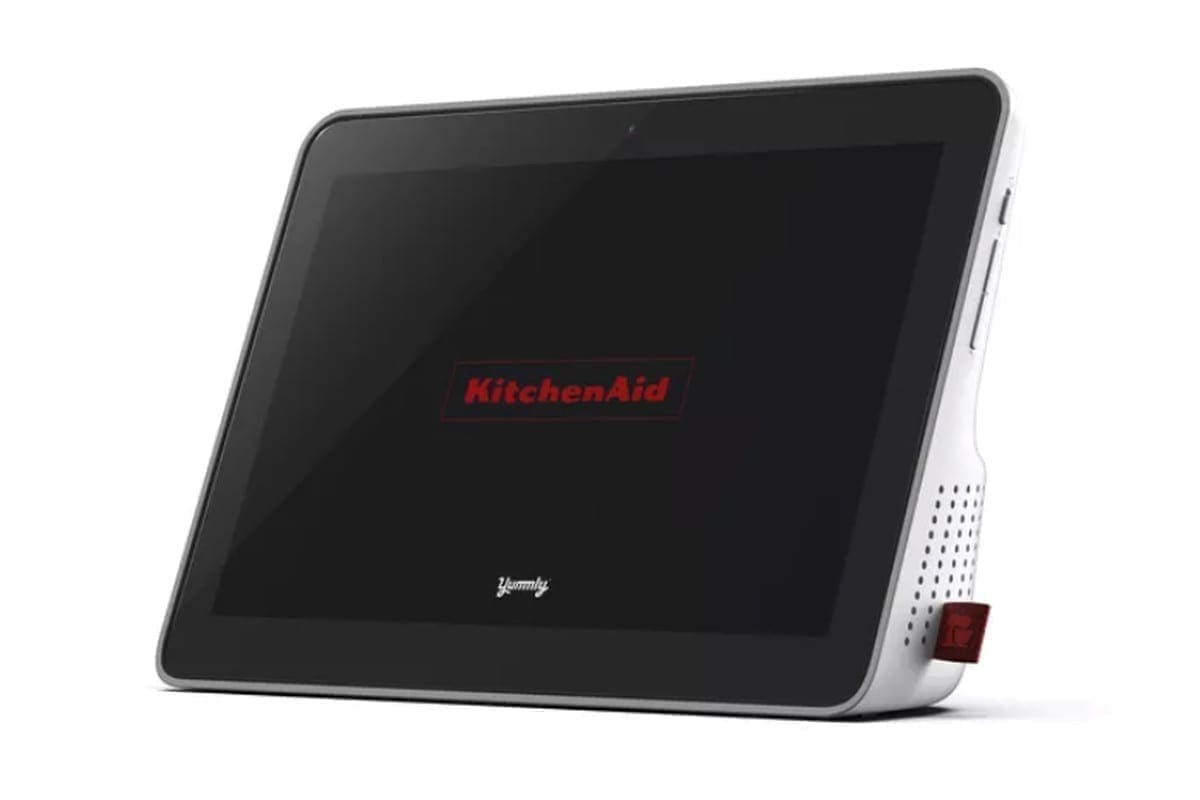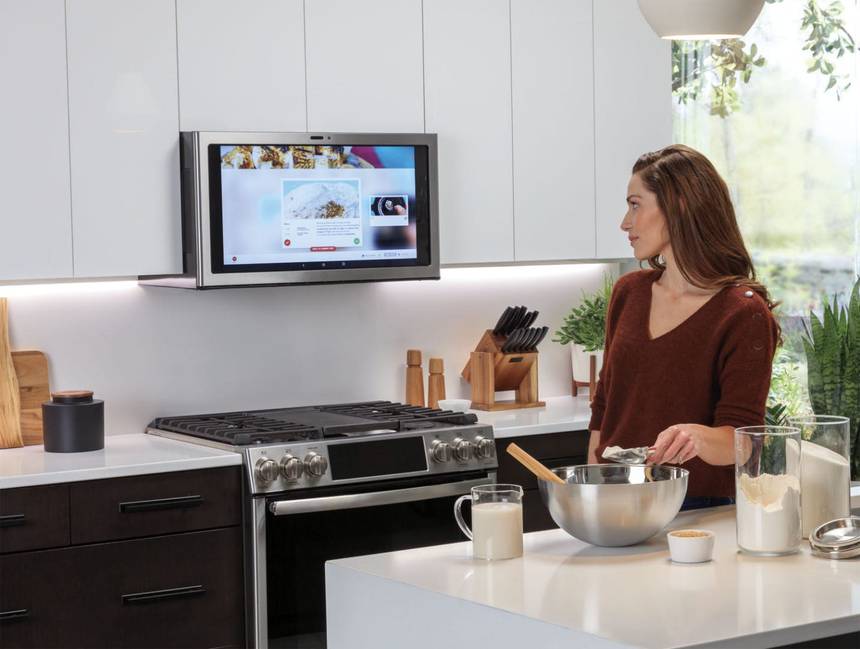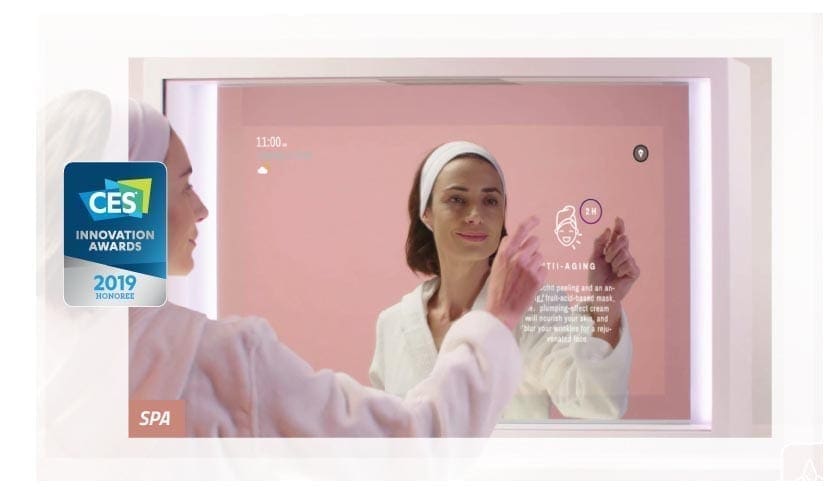Smart home products are evolving. Historically those commanding the consumer dollar have been more infrastructural elements like connected lighting, smart utilities, and alarms. However, this is shifting as more white goods, kitchen, and bathroom products become sensor embedded and internet connected.
This week sees over 180,000 folks descend on CES in Las Vegas. The show offers some interesting insights into where smart home tech is heading and how makers and vendors can capitalize on the opportunities it provides. Let’s take a look at the latest touch screen innovations:
Voice is Everywhere But Touchscreens Trump Ease of Use
This year consumers are lured by always-on internet connectivity, inherent in voice-activated tech and smart displays. Voice-activated tech has progressed from novelty to the mainstream with estimates that more than a quarter of consumers will use voice-activated digital assistants next year. But while voice connectivity appeals to consumers, touch screen ease is also remaining equally compelling.
Lenovo launched has launched Smart Clock, a tiny 4-inch device that compliments the Google Assistant embedded smart display launched in July. It’s positioned as a bedside alarm and supports voice and touch controls on an unobtrusive 4-inch IPS screen with a 440 x 800 display. The touch screen enables the user to manage daily tasks, view glanceable answers, enjoy music, podcasts, and audiobooks, and control their smart home.

Lenovo launched has launched Smart Clock, a tiny 4-inch device that compliments the Google Assistant embedded smart display launched in July. It’s positioned as a bedside alarm and supports voice and touch controls on an unobtrusive 4-inch IPS screen with a 440 x 800 display. The touch screen enables the user to manage daily tasks, make search queries, enjoy music, podcasts, and audiobooks, and control their smart home.
Touch Screens Make the Kitchen the Home Hub
Samsung’s Family Hub refrigerator continues to innovate and redefine the refrigerator category and set a new standard for connected living. This year we saw some upgrades to its virtual assistant Bixby, a new Family Board on a 21.5” LED touchscreen acts as a digital bulletin board in which members can easily stick notes and photos and even doodle right on the screen.

LG’s InstaView ThinQ smart refrigerator launched in 2018, was also on display this year at CES. It uses the touchscreen to manage your food using LG’s webOS software and Amazon’s Alexa, which will let you tag food with virtual stickers and expiration dates and get automatic reminders. LG has added Drop to its smart fridge touchscreen platform, meaning when a consumer follows a Drop recipe, LG appliances preheat ovens and automate temperatures according to the recipe.

This year KitchenAid unveiled a working model of the KitchenAid Smart Display, a voice-activated touchscreen. The KitchenAid Smart Display will feature a 10-inch display for easy viewing and it will be IPX-5 rated for resistance to faucet water, ensuring a worry-free cooking and the ability to wash and clean the device easily . The device is partnered with cooking platform Yummly, offering home cooks guided video recipe instructions and compatibility with over 10,000 smart home devices that work with the Google Assistant.

GE Appliances has its eyes above your stove with the return of their Kitchen Hub containing a 27-inch touchscreen that runs on Haier U+ Smart Life Platform, enabling the home cook to search for recipes, watch Netflix and control smart home devices. A forward-facing camera lets you video chat using Google Duo, and another cooktop-facing camera means you can capture and post pictures of your meals in progress. It’s prepped for a May 2019 launch. It’s not entirely clear how the device remains undamaged by cooking, but it’s captured the attention of many.
Mirrors Provide a New Interface for Touchscreens

Capstone Connected Home has developed a smart mirror with voice and touchscreen capabilities. It gives the user access to google assistant and access to functions such as social media, and google play store. Emails and messages can be composed directly on the mirror, while voice control can recognize six different voices and log users in and out of Google accounts. A 19 x 22 model will be available in the first quarter of 2019.

Taking the technology up several notches, CareOS’s Artemis is part mirror part computer. It recognizes each user and the products (such as makeup) the user is using and can connect them with tutorials to assist with hair and makeup. It also has teleconferencing functionalities and vision tests – allowing you to keep track of any changes in your vision.
The popularity of voice and touchscreen technology in the home demonstrates that consumers are moving away from keyboards and apps. It also highlights the need for coordinated home hubs without the limitations of interoperability. With Amazon and Google both fighting for the consumer dollar through partnerships, consumers will be forced to choose.
